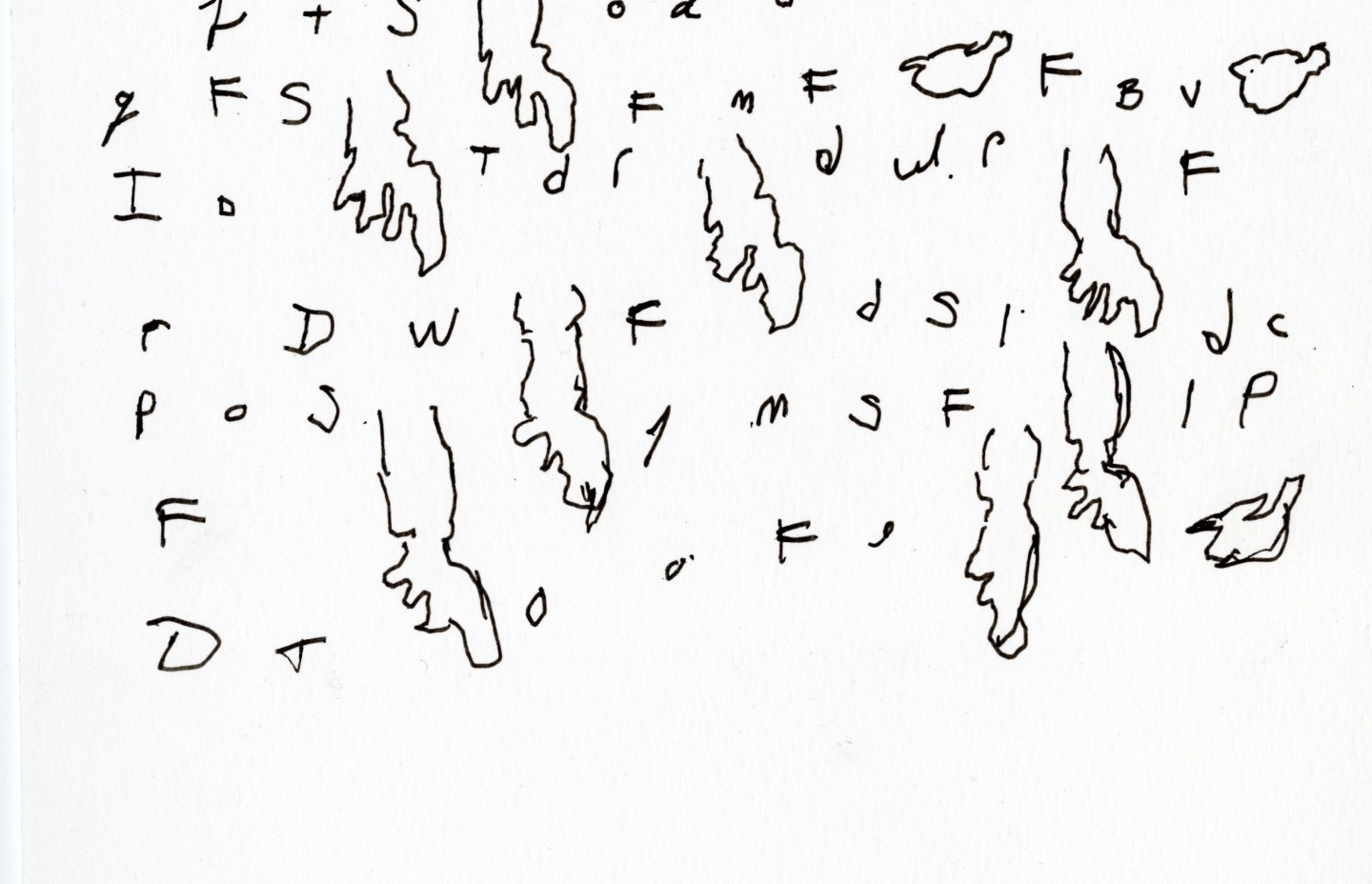
Langues rompues – Tongue breaks
Hannah Azar Strauss
- Special programming
This project is part of a three-stage collaboration with AXENÉO7.
I learned from Suneela Mubayi in the essay “The Temple Whore of Language” that the standard word in Arabic for translation is tarjam, which also means “to give someone’s life story/biography,” and that this has some overlap with rajam, which is “to pelt stones, but also to surmise or talk about something one does not know about.” The word naql (in Urdu: “to imitate or copy” and “fake or counterfeit”) is also used, which is “to transport, or it is to transmit information you heard from someone else,” making the translator “naqil/a, that is, the transporter, the medium of transport or a driver of the vehicle.” Ways of thinking about translation, the uneasy centrepoint of tongue breaks: long-haul trucker, counterfeiter, stone-thrower, gossiper. Translation is a promiscuous chain of disappearances. So is all language, but translation more easily gives away its state. Tongue breaks is about the volleying between language, law, translation, and failure (or, death).
I began with Sappho via Anne Carson’s translation, If Not, Winter, in which the fragmentary nature of Sappho’s surviving poetic text is gesturally demarcated on the page by brackets and elongated spaces, her “aesthetic gesture toward the papyrological event.” The brackets are a formed void, articulated but empty. There is no there there, instead, maybe, the missing spoken-to, what Derrida in L’Œuvre du Deuil returns to as he writes to Barthes after the latter’s death: an unfixable figure, out of reach, out of hand. But the unfixable figure is, at least, nameable, and to name the unknown is to inscribe its absence. This problem of relation is also a problem of translation, a situation in which infidelity is the only option, resolved by neither citation nor silence. Translation and mourning share a posture of attention which makes of us the counterpoint, the ricocheting nothing. And words, waiting to be translated, are turned towards a future that means nothing to them except total transformation, which is also disappearance. They’re promised a country to which they themselves will never have entry; structurally, the word is at the gate of its translation and can never pass through.
tonguelangue (banners)
Taking a few definitions of “tongue” in English, in a heady and delusional state of mind, I began to translate them back and forth between French and English. I wanted to see what happens when translation probes for failures across several registers. The chance-failures started to relax into nonsense, a kind of hysterical translation. The text that came from this process was designed by Simon Guibord for three banners installed on the exterior wall of AXENÉO7, inviting through public reading an encounter with the non-sensical nature of language, translation, and their associated politics.
broken telephone (workshop)
Participants:
Marc Alexandre
Vincent Bonin
Sophie Bélair Clément
Wawa Li
Diyar Mayil
Florence Simard
Hannah Strauss
As part of the tongue breaks project 7 artists and writers were invited to AXENÉO7 for an afternoon of experimental translation. I sent participants the “tonguelangue” banner text in advance, as well as a longer text on the ongoing questions and ideas informing the residency, and asked them to bring in a small object inspired loosely by these. Starting with these objects we followed basically a “broken telephone” structure to describe and translate them. Over several hours, we pursued a series of simple actions:
Action one: pass your object to the left
Action two: translate the object you now hold, in writing or drawing
Action three: pass the object to your left, as well as your translation
Action four: translate the object you now hold, in writing or drawing, or loosely/associatively respond to its translation
ETC.
Once the object and its translations reached their starting point again, each person spoke briefly about their own associations with the object and its meaning for them. Finally, we wrote directly to the speaker a few words, knowing now the origins of the object which we first encountered without any description. Participants were invited to mail a small 2D work to me a few weeks following the workshop if either the process of the workshop or the notes given to them so inspired.
tongue breaks (micro-publication)
Another outcome of the residency will be a micro-publication, currently in progress, that compiles documentation of the results of the workshop and of the small works mailed afterwards, accompanied by a text.
Hannah Azar Strauss is an artist living in Tiohtià:ke/Mooniyang, also known as Montréal. Working mainly with drawing, print, and experimental book forms, her practice explores linguistic estrangement, everyday gestures, and the cultivation of memory through archive. Her recent work has mostly developed collaboratively through slow, iterative projects inspired by the process of translation. She teaches at Vanier College in Communications, Media and Studio Arts.



